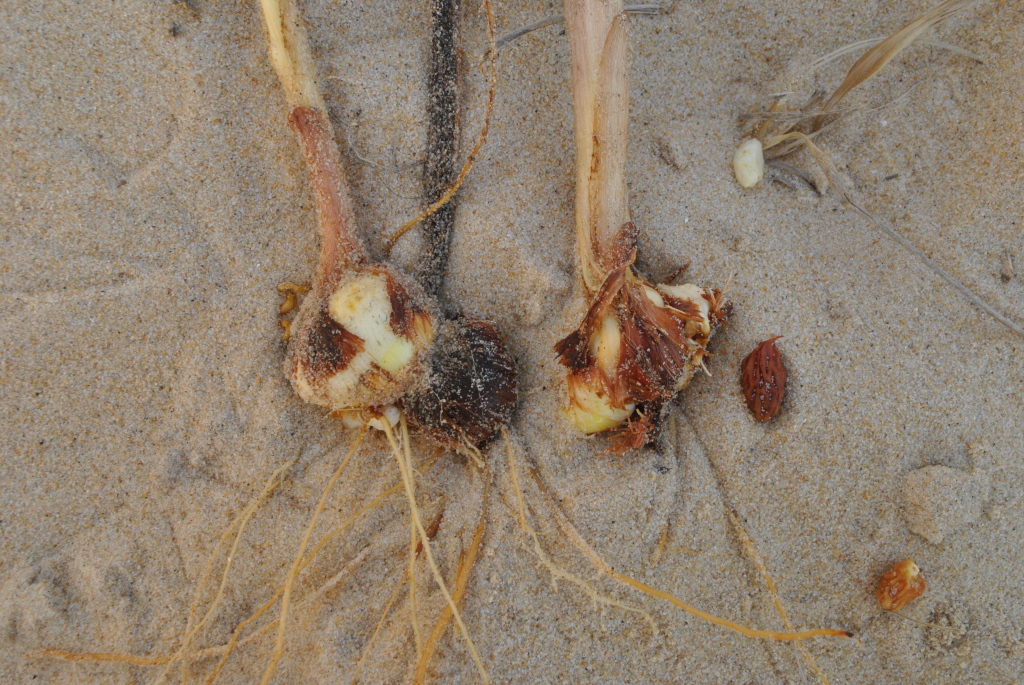Gladiolus gueinzii
KunzeCorm with outer layers papery; subterranean bulbils often produced. Stem usually unbranched, with 2–3 sheathing leaves. Basal leaves 3–5, linear, 0.3–0.7 cm wide, flat, fleshy, midvein and margins prominent. Inflorescence with flowers subdistichous or secund 1–7-flowered. Flowers funnel-shaped, pink to pale or dark mauve. Perianth tube 0.8–1.5 cm long, slightly widened at mouth, straight or slightly curved; lobes with margins and apex flat, spreading to erect, subequal, obovate, the inner 3 ± rhomboid-obovate, most lobes with a central white stripe or mark. Stamens symmetric or asymmetrically arranged to one side of flower; anthers 5–6 mm long. Style branches spreading at level of anthers. Flowers Oct.–Dec.
EGL. Native to South Africa where it occurs on coastal dunes, a widespread weed on the east coast of New South Wales, with a few populations known to occur around the Mallacoota inlet in Victoria.
Gladiolus gueinzii is capable of spreading by buoyant corms. This species is thought to have been introduced to Australia by dumped ballast water (Heyligers 1999).
 Spinning
Spinning

